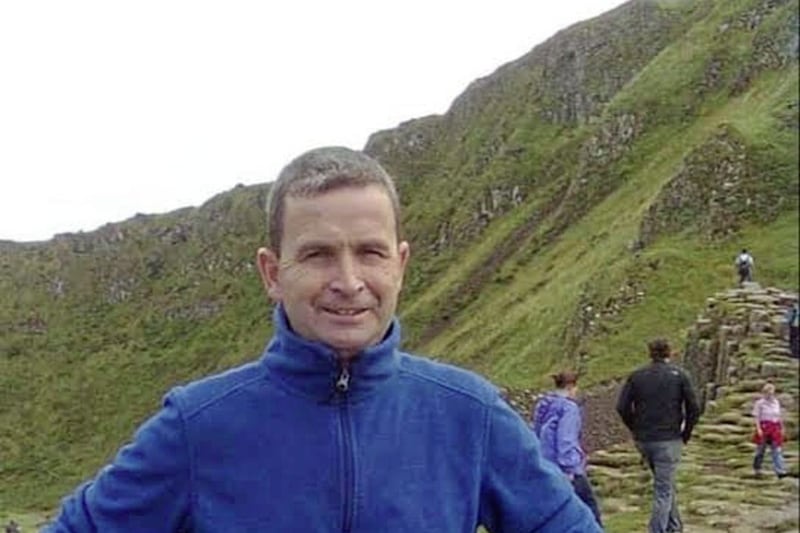What is haemochromatosis?
IT has been described as 'bronze diabetes' and even 'the Celtic curse', but despite an estimated 40,000 Irish people suffering from it, the potentially life-threatening condition of haemochromatosis remains on the margins of the Most Damaging Diseases directory.
The genetic disorder, caused by an overload of iron in the body, is especially prevalent among the Irish and other Celtic people – one-in-83 is believed to have the condition, with one-in-five of us actually carrying the gene.
But a general lack of awareness recently prompted one reader to ask us why we had not highlighted haemochromatosis in a recent article on its 'opposite number' – iron deficiency.
'Too much iron in the blood'
Indeed, while eating meat and iron-rich greens is encouraged from an early age, most of us are oblivious to this iron-sensitive condition which could wreak serious havoc on the health of those carrying the offending gene.
Sufferers of haemochromatosis absorb excess iron from food which then accumulates in the body's joints and organs, leading to debilitating and life-threatening complications including liver cirrhosis, liver cancer, diabetes and heart failure.
Early diagnosis is key, before the excess iron has a chance to damage vital organs, but early symptoms, which are often vague and sweeping, can easily be overlooked.
This, coupled with the fact that an ordinary blood count test fails to unmask the disease, adds to the confusion.
It can lead to some startling assumptions, as Omagh businessman and GAA manager Larry Strain found out.
Symptoms
Larry, who manages Omagh St Enda's senior football team, presented with typical non-specific symptoms of haemochromatosis: fatigue and general malaise, which were initially dismissed by a GP who, on examination, could see "nothing wrong".
"Then, when I felt really unwell, I visited the A&E department of the Tyrone County Hospital in Omagh and they discovered an irregular heart-beat," Larry recalls.
"I was kept in for further tests and an echo-cardiogram revealed that my heart was only functioning at 25 per cent.
High ferritin levels
"At that point they were talking about a transplant, which was when things got really scary. I had more tests at Belfast City Hospital and was suspected of having heart failure. The strange thing was that my iron levels were normal, but it was the ferritin levels – the concentration of iron being stored – that were through-the-roof.
"The levels are supposed to be in the region of 100 but mine were 6,000 and the overload of iron deposits had been damaging my heart."
In fact, heart damage, along with liver damage, are two of the more serious consequences of untreated haemochromatosis – but, fortunately, in Larry's case the damage was reversible.
Venesection and treatment
"I was very fortunate and it was such a relief knowing what the problem actually was," he says.
"Once, the correct diagnosis came, the treatment was straightforward – removal of blood from the body which is known as venesection.
"Initially, I had to give a unit of blood – which is just under a pint – for five days in a row, then a unit per week for two years.
"The only permanent effects I have been left with are pains in my hands which are eased by a daily anti-inflammatory tablet. I think I have definitely been one of the lucky ones, but my message to anyone worried about symptoms that don't go away, is just go and get tested before it's too late."
Tragically, it was too late for many sufferers, including Irish Fianna Fáil politician, Brian Lenihen who died from liver disease in 1995.

His sister, Mary O'Rourke, also from the Lenihen political dynasty, recounts in her book, Just Mary, how the former Tanaiste had, in fact, been suffering from haemochromatosis, despite whispers that his death was linked to heavy drinking.
"At the time, this disease was practically unheard of in Ireland," she writes. "In the early stages of the condition, Brian's doctors hadn't been able to identify the problem and by the time it was finally diagnosed, he was on the verge of liver failure and very seriously ill."
A genetic disorder
That was in the 90s and yet, two decades later, haemochromatosis still tends to fly under the radar with patients and even with some GPs, says consultant haematologist, Dr Feargal McNicholl.
Dr McNicholl who sees around 600 patients with the condition at clinics at Altnagelvin Hospital in Derry and at a groundbreaking nurse-led venesection service in Omagh, says there are still too many undiagnosed sufferers throughout the north whose health is being put at risk by this "silent destroyer".
"Some of the damage caused to internal organs by the over-load of iron is irreversible, so the main message has to be raising more awareness and preventing the damage happening in the first place," he says.
"One way this could be done is through a screening programme and there has been a consultation taking place on this, but I would encourage anyone with symptoms to go to their GP and have the proper tests carried out.
"The biggest problem with haemochromatosis is that it first presents with non-specific symptoms - tiredness, joint pains, heart problems, impotence, liver abnormalities - so it can get overlooked unless the doctor or patient is tuned into the condition and wants to rule it out from the outset.
"More than a silent killer, this disease is a silent destroyer which can cause long-term damage and destroys people's lives in the process."
He says 10 per cent of people in the north have one copy of the gene, making them carriers – it takes two copies before people "run into problems" – thus bequeathing the region with one of the highest incidence rates of haemochromatosis in the world.
"Any gene which persists in the population is associated with a survival advantage and it is thought this mutation (c282Y) first happened 80 generations ago in a common celtic/northern European ancestor," Dr McNicholl explains.
"When you think that around 1,000 years ago you would have to go out and hunt an animal to get meat, the human body had to be much better at absorbing iron.
"People who carried the gene were less likely to be anaemic, more likely to be stronger, so the gene persisted."
As chairman of Na Magha Hurling Club in Derry City and coach at St Mary's Faughanvale GAA, Greysteel, he is well placed to reflect on the hidden health risks among healthy young sportsmen and women today who excel at endurance sports.

"I would love to see a screening programme for haemochromatosis and maybe sports clubs would be a good place to start," Dr McNicholl adds.
"In the back of my mind I often wonder what it is about someone that makes them able to excel above anyone else on the sports field – is it good haemoglobin levels because of lots of iron?
"It is certainly something to think about – and I hope many more people do just that."






